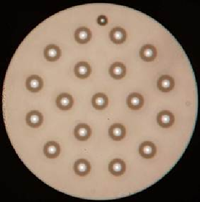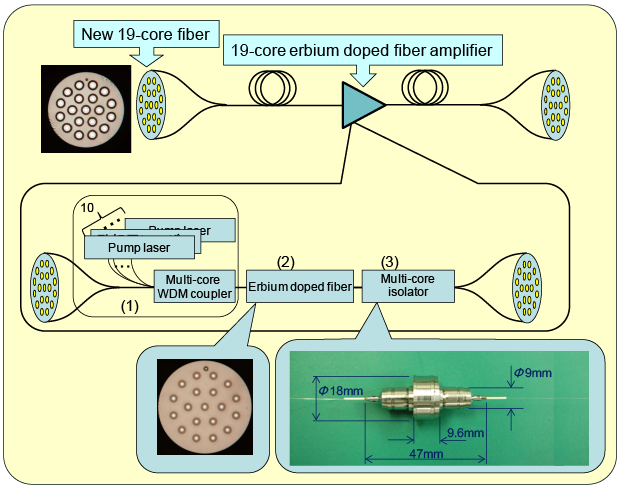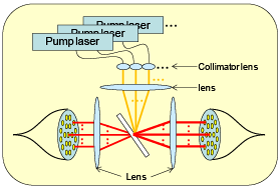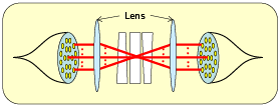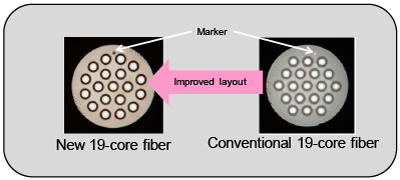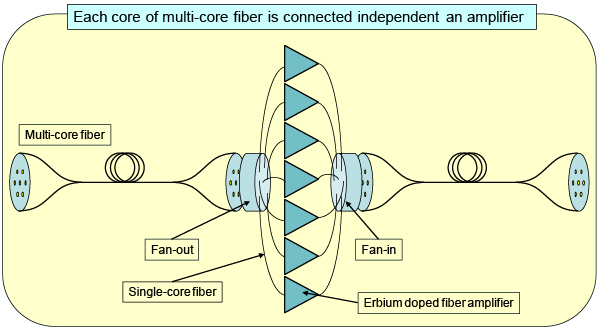- Developed a prototype of 19-core EDFA (erbium-doped fiber amplifier) for demonstrating the principle of simultaneous pumping which enables long-distance optical transmission with a large capacity equivalent to 19 individual optical fibers.
- By adopting a free-space optical system using lenses, a single optical amplifier can be used for all cores, increasing efficiency compared to conventional single mode fiber technology requiring 19 optical amplifiers.
- Expected to allow realization of long-distance multicore-fiber transmission systems required to support continuously increasing communication traffic.
The National Institute of Information and Communications Technology (NICT, President: Dr. Masao Sakauchi), in collaboration with Furukawa Electric Co., Ltd. (Furukawa Electric, President: Mitsuyoshi Shibata), its subsidiary OFS Fitel, LLC (OFS, CEO and Chairman: Timothy Murray), and Optoquest Co., Ltd. (Optoquest, President: Noboru Higashi), has succeeded in developing the world’s first “19-core simultaneous pumped optical amplifier” for multicore fiber transmission.
The development of multicore fibers as a next-generation technology that will increase the transmission capacity per single optical fiber has been highly anticipated. Since multiple cores (light paths) exist in a multicore fiber, however, it is difficult to integrate optical amplifiers compactly, which are needed for long-distance transmission. This has been an obstacle to the practical introduction of long-distance transmission systems using multicore fibers. The 19-core simultaneous pumped optical amplifier is capable of simultaneously amplifying optical signals transmitted through 19 cores. The technology is a leap forward in the practical realization of large-capacity, long-distance optical communication using multicore fibers.








